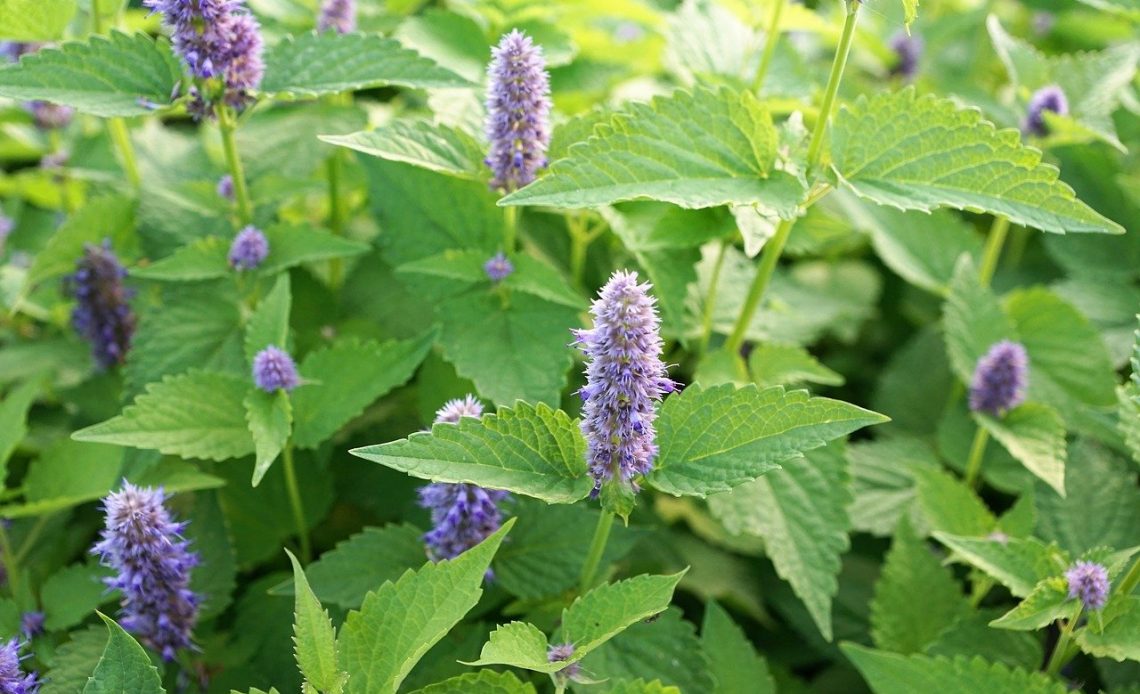

We’re here to help! Wild Yards is a completely free website that is 100% dedicated to helping you create a wildlife-friendly, sustainable yard. Read more
WildYards is reader-supported. When you buy a product through a link on our site, we may earn a comission. Every product is independently selected by our (obsessive) editors and our reviews are unbiased and objective. Read more about our mission or our privacy policy.
When deciding which flowers to place in your garden, you may want to select some perennials that can attract hummingbirds to your yard.
The best perennials for hummingbirds will be brightly colored. Red is the best color for this, but any bright and bold color can catch their attention. Flowers with a tubular shape are the best option for their long beaks, and they also tend to hold more nectar.
You should choose plants that are native to your local area. These will be easier to care for and your local hummingbirds will be familiar with them as a food source. Because perennials bloom at a specific time each year, your hummingbirds will learn when they can expect food and visit when they are in season.
By creating a garden that is designed to attract hummingbirds, you’ll also attract bees, butterflies, and other pollinating insects. Your local nursery is the perfect place to start, and they will be able to tell you which plants will thrive in your area.
To get your creative juices flowing, here are 16 perennial flowers that can attract hummingbirds to your yard.
16 Perennial Flowers That Attract Hummingbirds To Your Yard
Anise Hyssop (Hummingbird Mint)
Anise hyssop is a tough little aromatic. It’s resistant to interference from rabbits and tolerant to drought. Taller varieties thrive in larger garden plots, while their more compact relatives are at home as potted flowers for hummingbirds. This flower is available in red, pink, orange, yellow, and blue.
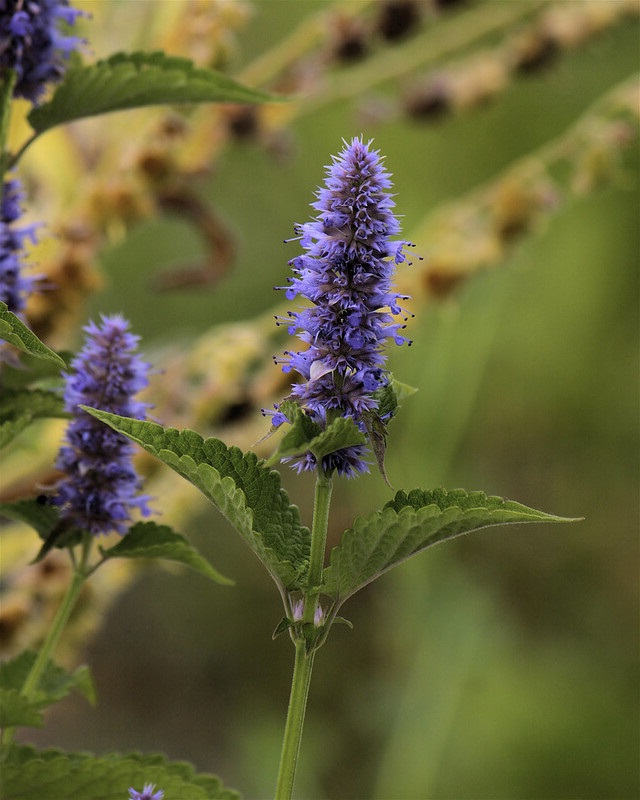
Beardtongue
Beardtongue is available in a variety of different colors, shapes, and sizes. Some of the varieties even have purple leaves. This perennial has a long blooming season and sports spiky red, purple, orange, or blue flowers.
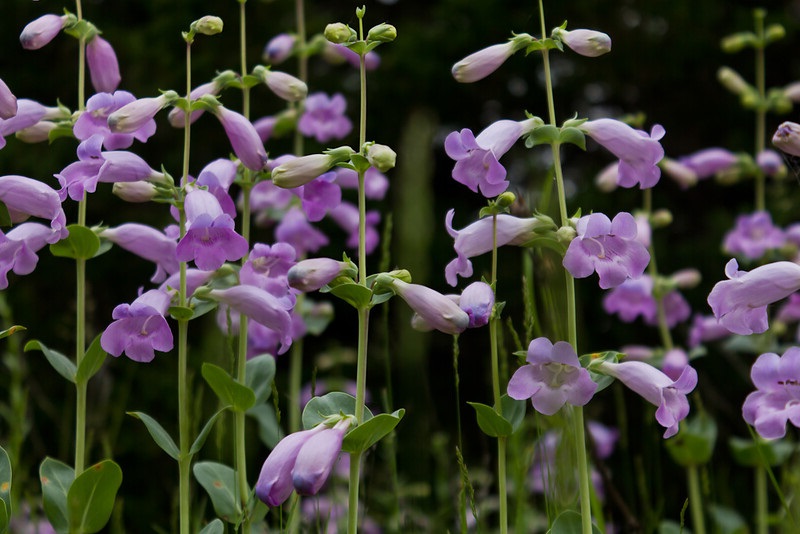
Bee Balm
Bee Balm is a spherical flower that grows 2-4 feet tall. It’s self-seeding, which means that it will propagate across your garden on its own if you don’t prevent it. This plant is an interesting addition to your garden and is loved by hummingbirds, bees, and butterflies.
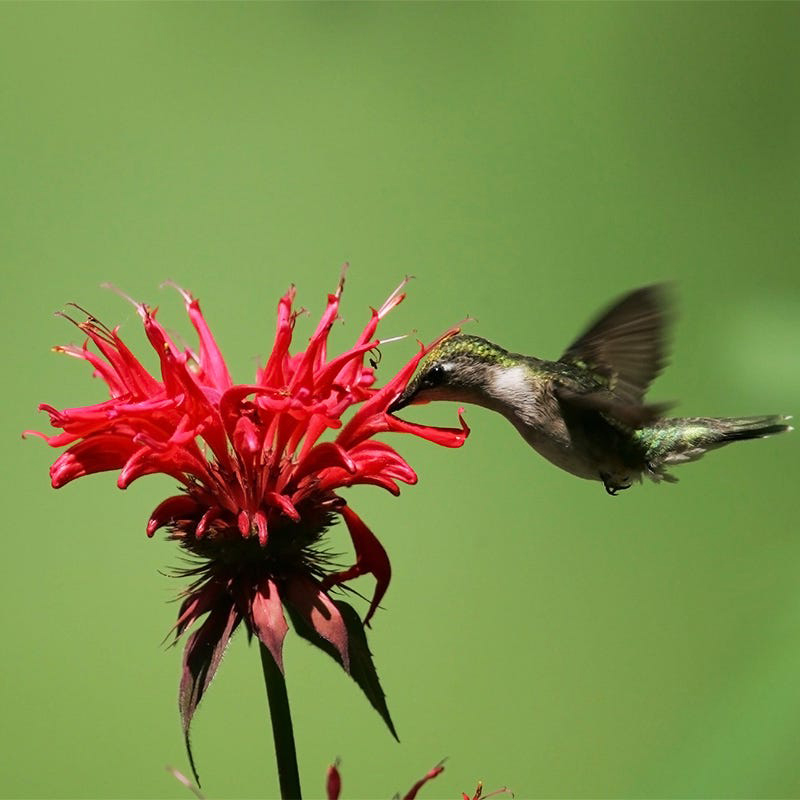
Blazing Star
Blazing Star is a tall, brush-shaped plant that can add some vertical elements and interesting textures to your garden. This flower is available in both white and violet, and the purple varieties act as beacons to attract hummingbirds.
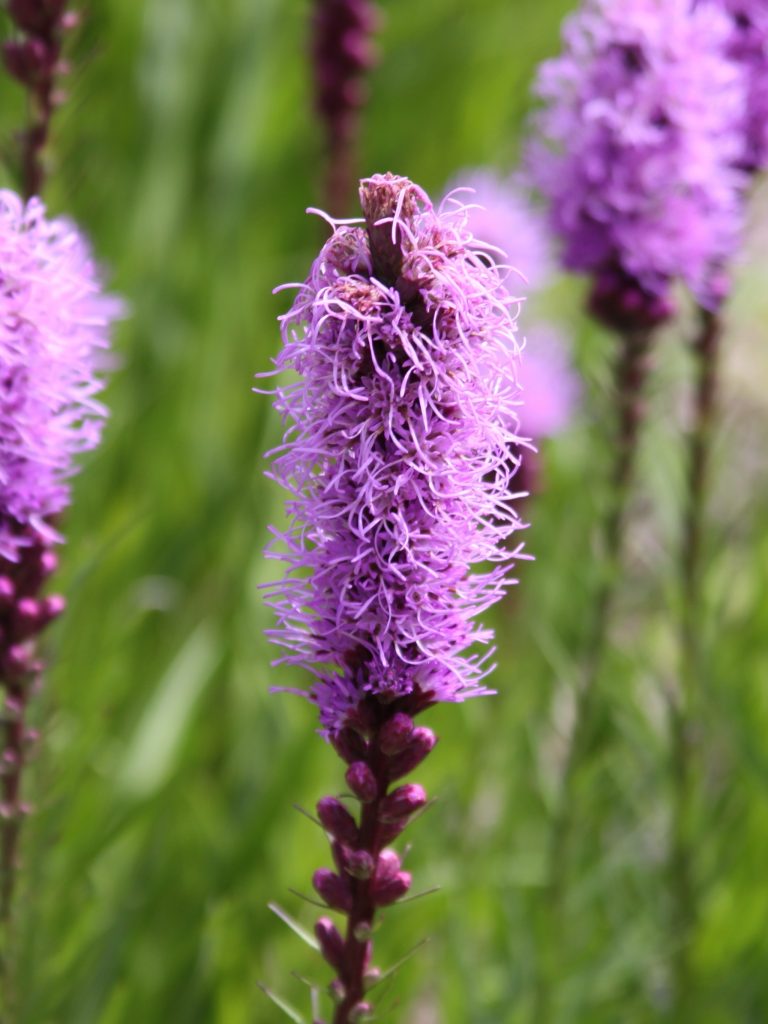
Bleeding Heart
Bleeding Heart can grow as tall as 36 inches and thrive in cooler climates. You should plant them in the shaded areas of your garden and keep their soil moist but well-drained. These flowers are available in both white and pink, and the pink variety is great for attracting hummingbirds.
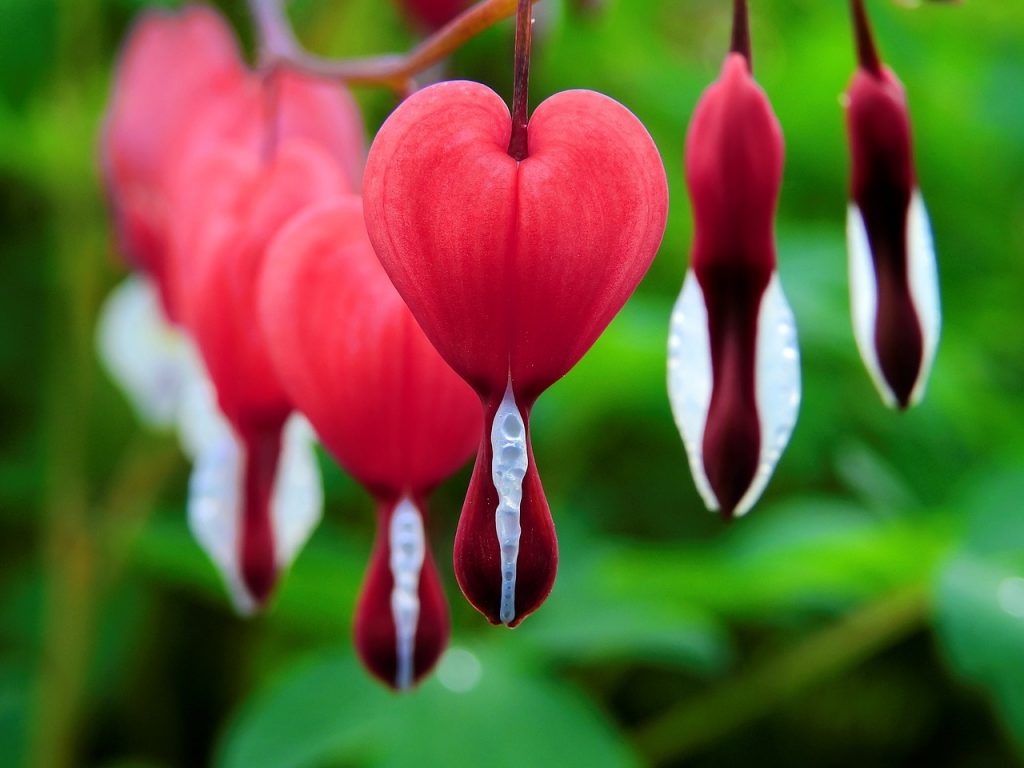
Butterfly Bush
Butterfly Bush is a flowering shrub that is known for attracting butterflies, but it’s great for attracting hummingbirds, too. Its flowers grow in thick clusters and bloom multiple times throughout summer and fall.
This shrub is best planted in a sunny spot and is tolerant of drought. Larger Butterfly Bushes provide plenty of blooms for multiple hummingbirds and also provide shelter for various bird species.
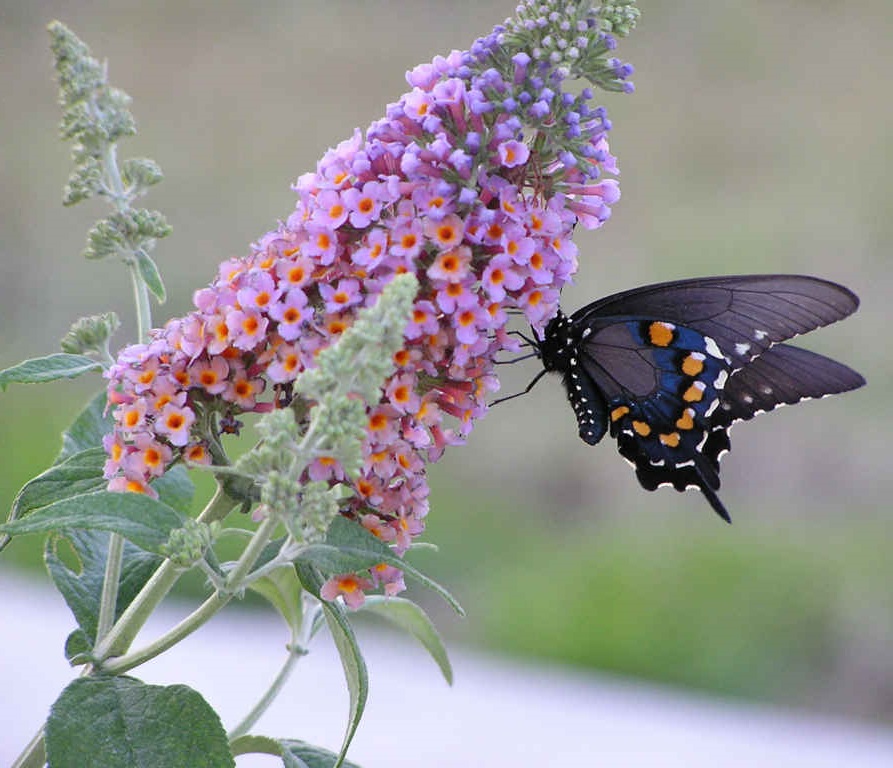
Cardinal Flower
The Cardinal Flower is another vertical bloom that can grow as high as 4 feet tall and makes a great centerpiece for mixed floral arrangements. Its bright red flowers provide a striking view for any garden and are just as attractive to people as they are to hummingbirds.
These plants are best positioned at the back of long flower beds and in the center of circular arrangements. They are somewhat short-lived compared to some other perennials, but they are also self-seeding and will make a permanent home in your garden.
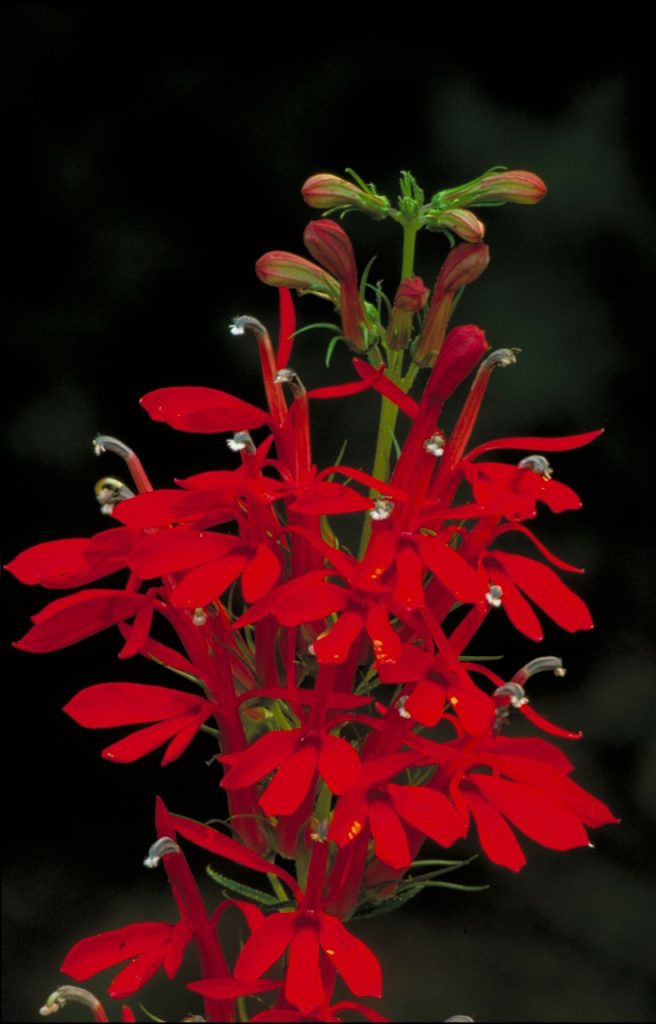
Cape Fuchsia
Cape Fuchsia is a great choice for milder climates, where they are nearly evergreen. They come in a wide range of colors including, orange, pink, salmon, yellow, and white. The Cape Fuchsia’s trumpet-shaped blooms are exactly the kind of nectar source hummingbirds are looking for.
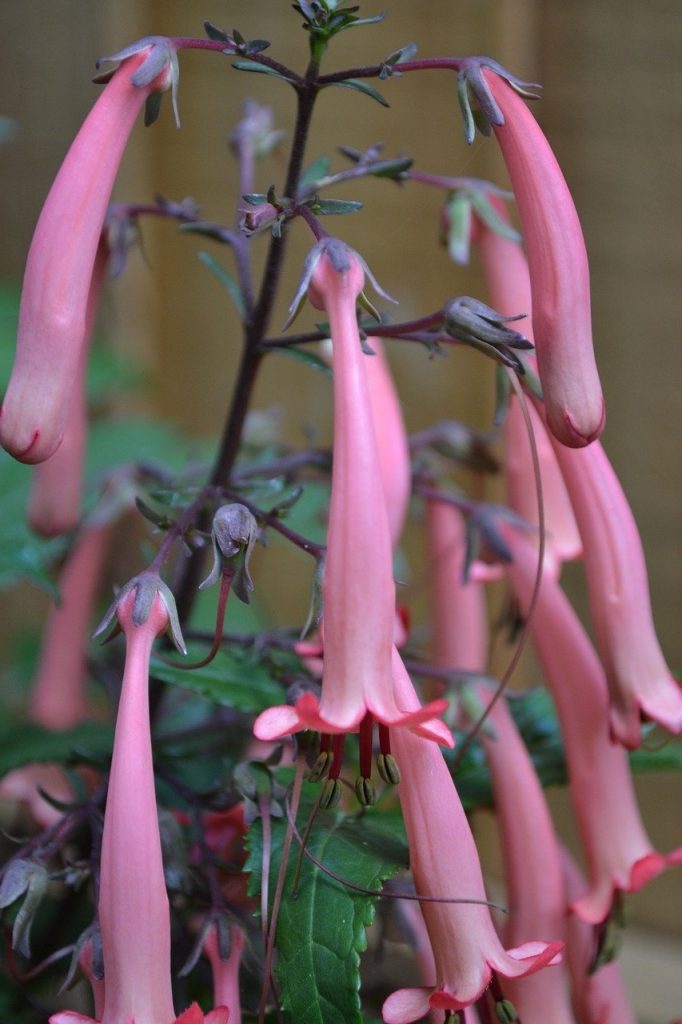
Catmint
Catmint provides a large bed of bluish-purple stalks, with an array of tiny blooms lining each vertical spike. It is tolerant of drought and provides a pleasant aromatic smell.
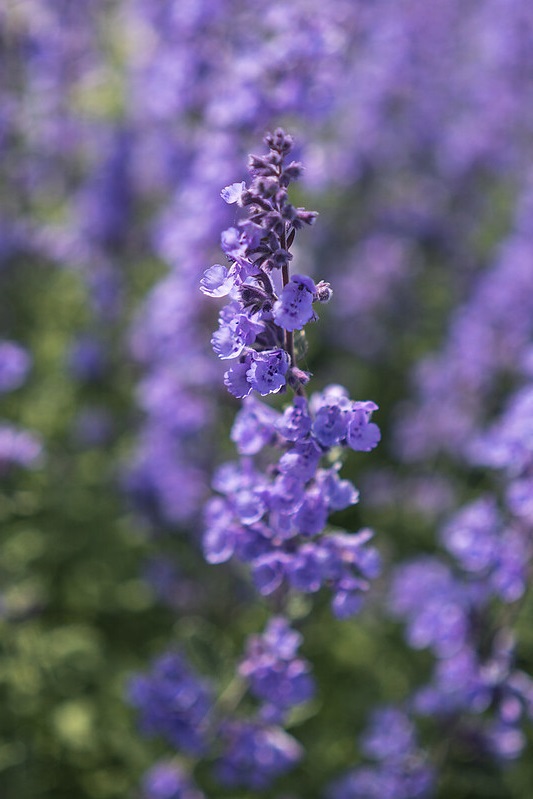
Columbine
Columbine comes in a variety of shapes, sizes, and colors, all of which hummingbirds love. They grow anywhere from 1 to 3 feet tall depending on the variety and are most often planted around the outer edge of arrangements.
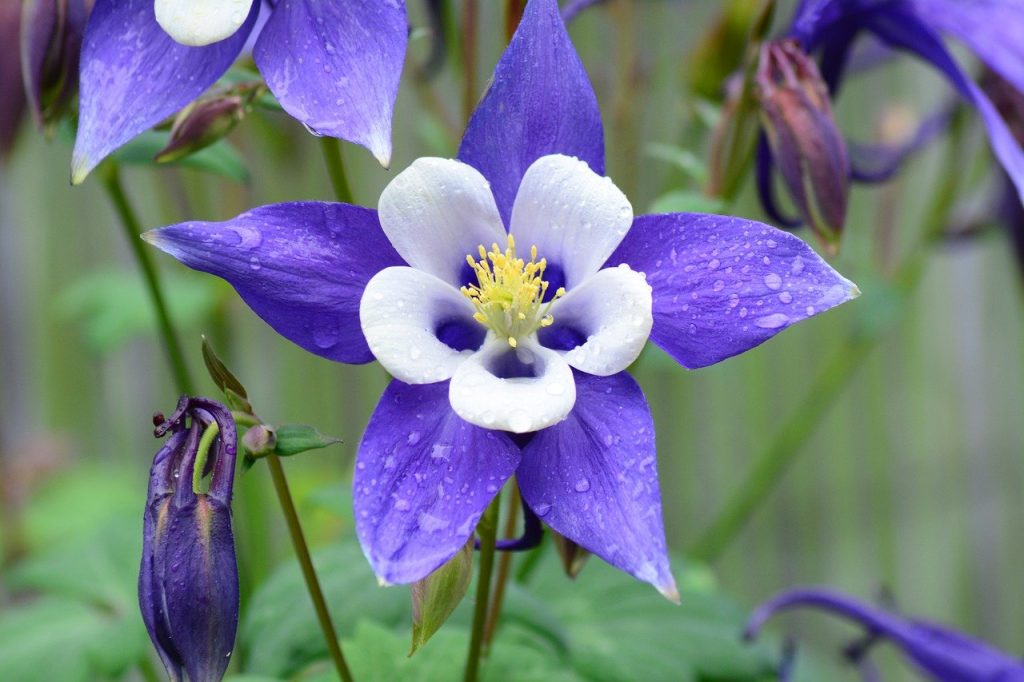
Daylily
You may have shied away from including Daylilies in your arrangements after hearing that each flower only lasts for one day, but this plant is a great choice for attracting hummingbirds. Hummers love their trumpet-shaped flowers and the plant bears them in large quantities over many weeks.
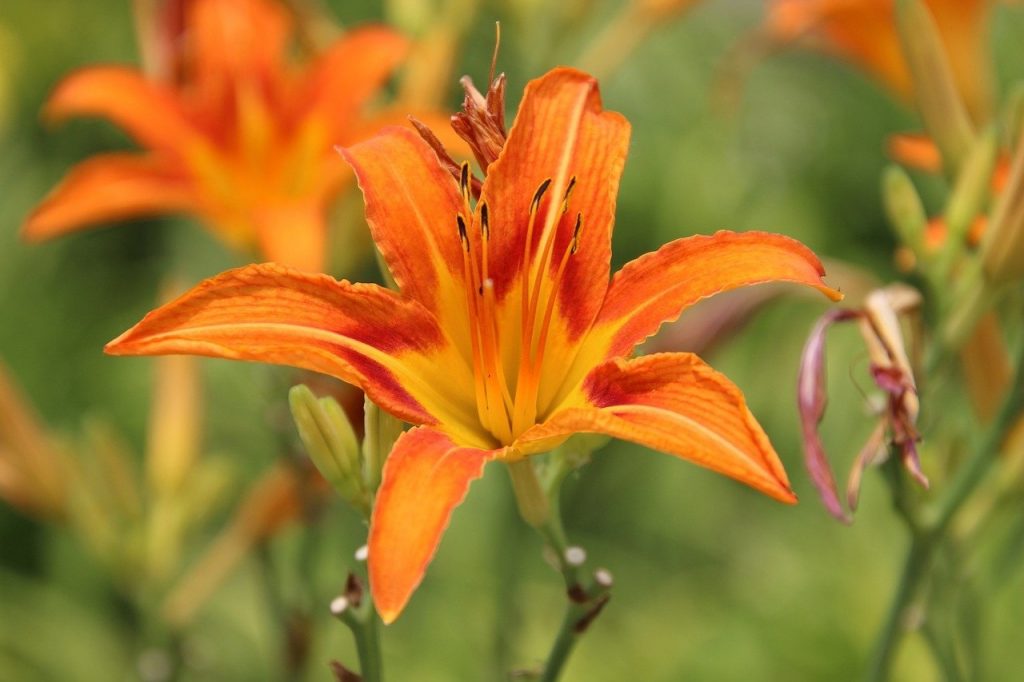
Garden Phlox
Garden Phlox is a classic perennial that comes in different varieties to suit your desired placement. The tall, fragrant flowers of one variety will make the perfect centerpiece for larger beds, while their more compact relatives can thrive in planters and containers.
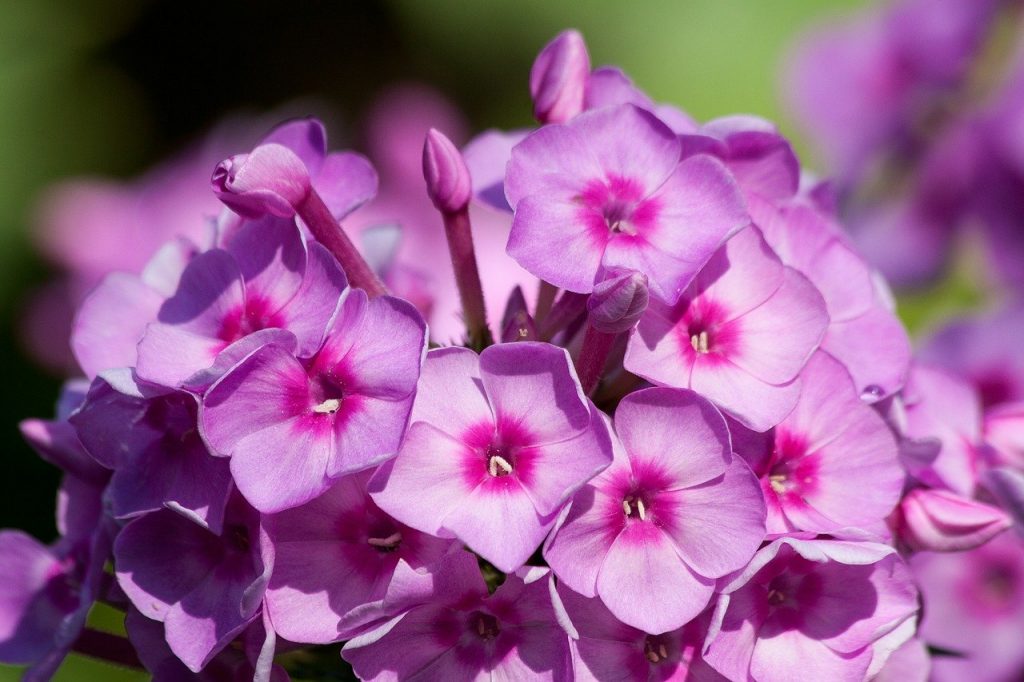
Lungwort
Lungwort is a perfect inclusion for your hummingbird garden, as it blooms early in the spring. This will provide one of the first food sources for hummingbirds, who love their clusters of blue, pink, or white flowers.
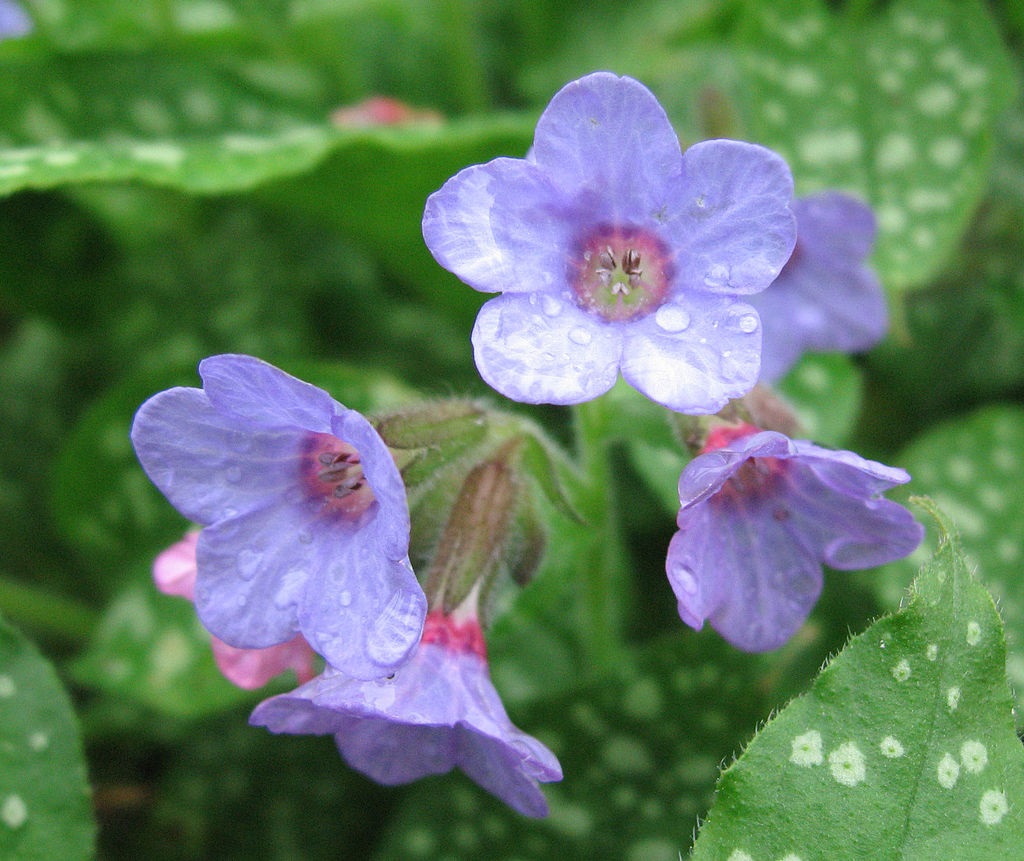
Lupine
Lupine is a wild plant that does not fare well in cultivated gardens, but there are hybrids available now that do very well. These perennials are short-lived compared to many other plants, but they bloom early in the spring when other hummingbird food sources are scarce.
These flowers form a unique cone-shaped cluster and come in a range of colors like blue, purple, red, and yellow. Smaller varieties grow to be less than 2 feet tall, while other types can easily reach 3 to 4 feet.
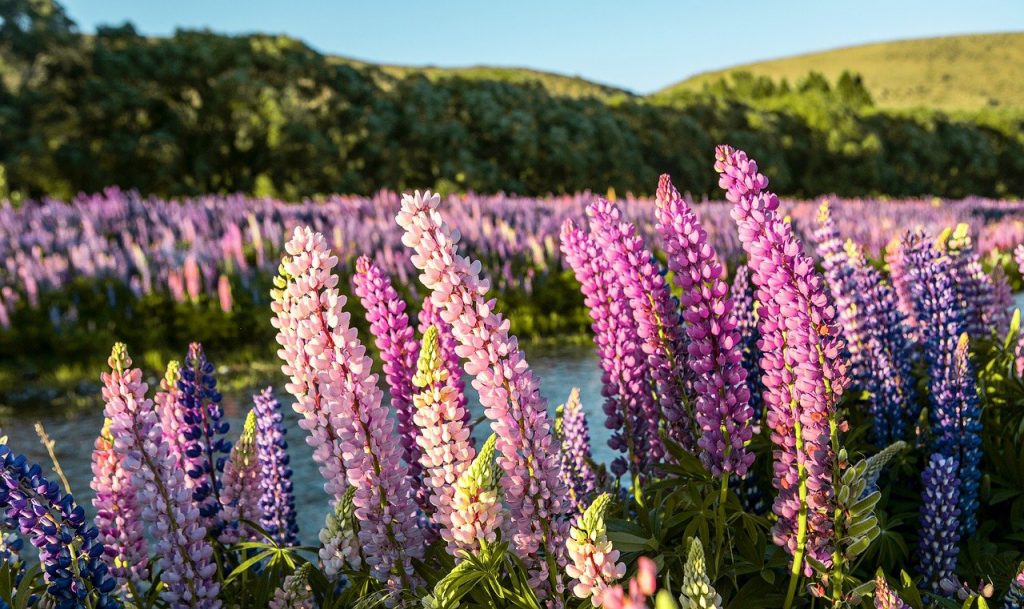
Salvia
Salvia comes in a wide variety of different species, and the best variety to grow as a garden perennial is Autumn Sage. This plant is part of the mint family, and its tall, spiky flower clusters do well at the back of large flower beds or in the center of circular arrangements.
These perennials usually bloom from mid to late summer and will bloom multiple times if given enough water. They grow up to 3 feet tall and are considered easy to care for, making them great for beginner gardeners.
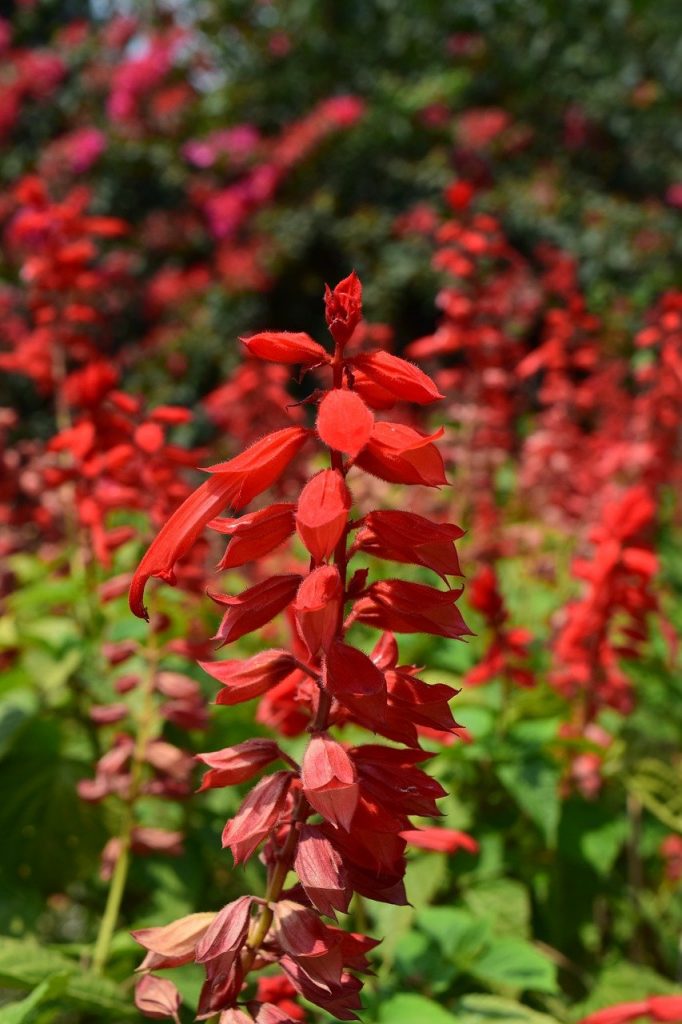
Trumpet Creeper
Trumpet Creeper is the only vine plant on this list and is also known as Hummingbird Vine. It can climb on nearly any reasonable surface and has been known to take over gardens if it is not properly maintained. With frequent pruning, however, you can keep this plant under control and provide a picturesque food source for your local hummingbirds.
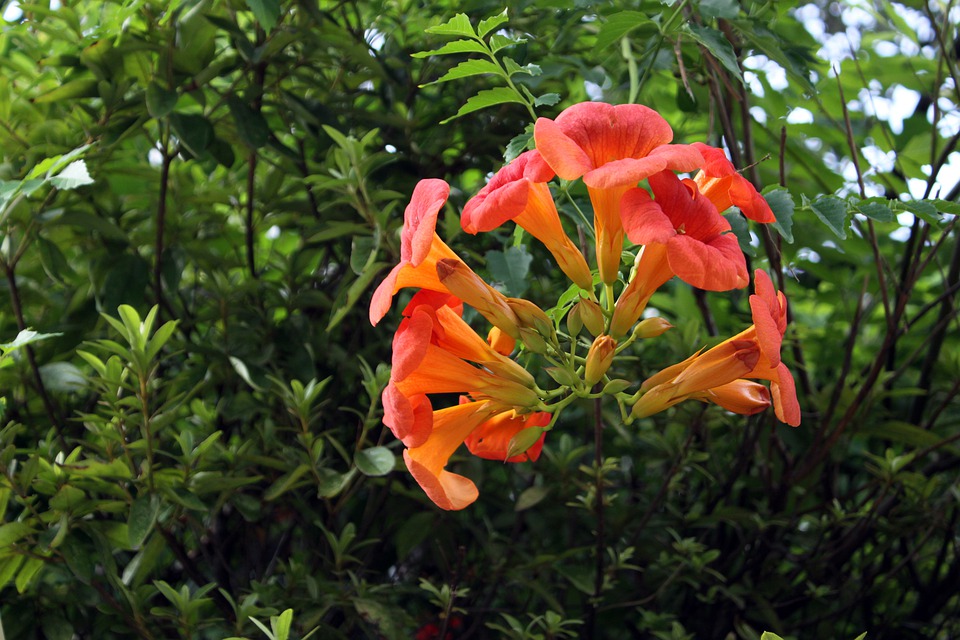
Caring For Your Perennial Garden
Spiders Are Your Friends
You may be tempted to clear out any spider webs you find among your perennial plants, but these are a boon for hummingbirds. Your hummers like to steal the insects caught in these sticky traps, and they’ll use the webs themselves as nesting materials.
Diversity is Important
The key to creating a garden that attracts and sustains hummingbirds is to diversify your collection of plants to include multiple species. Mixing a variety of species with different bloom times will help you to provide plenty of nectar throughout spring, summer, and fall which is why you should also consider mixing some annual flowers that hummingbirds love.
If you live in the South, you should also consider including flowers that bloom during the winter in mild climates like yours. This can offer a much-needed respite for hummingbirds who are migrating away from colder climates.
With the 16 perennials we’ve listed here, you’re sure to find a great collection of flowers that attract hummingbirds that are native to your local area.
